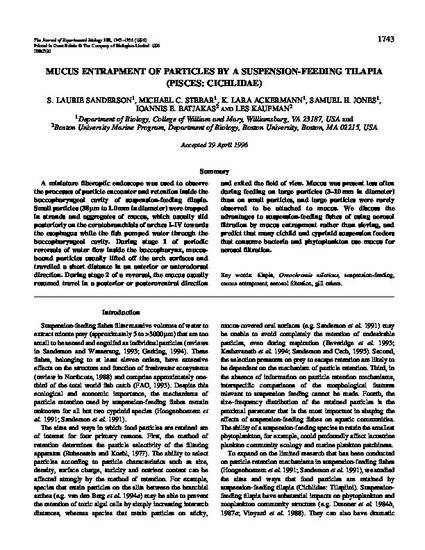
A miniature fiberoptic endoscope was used to observe the processes of particle encounter and retention inside the buccopharyngeal cavity of suspension-feeding tilapia. Small particles (38 µm to 1.0 mm in diameter) were trapped in strands and aggregates of mucus, which usually slid posteriorly on the ceratobranchials of arches IIV towards the esophagus while the fish pumped water through the buccopharyngeal cavity. During stage 1 of periodic reversals of water flow inside the buccopharynx, mucus-bound particles usually lifted off the arch surfaces and travelled a short distance in an anterior or anterodorsal direction. During stage 2 of a reversal, the mucus usually resumed travel in a posterior or posteroventral direction and exited the field of view. Mucus was present less often during feeding on large particles (310 mm in diameter) than on small particles, and large particles were rarely observed to be attached to mucus. We discuss the advantages to suspension-feeding fishes of using aerosol filtration by mucus entrapment rather than sieving, and predict that many cichlid and cyprinid suspension feeders that consume bacteria and phytoplankton use mucus for aerosol filtration.
Available at: http://works.bepress.com/slaurie-sanderson/35/
